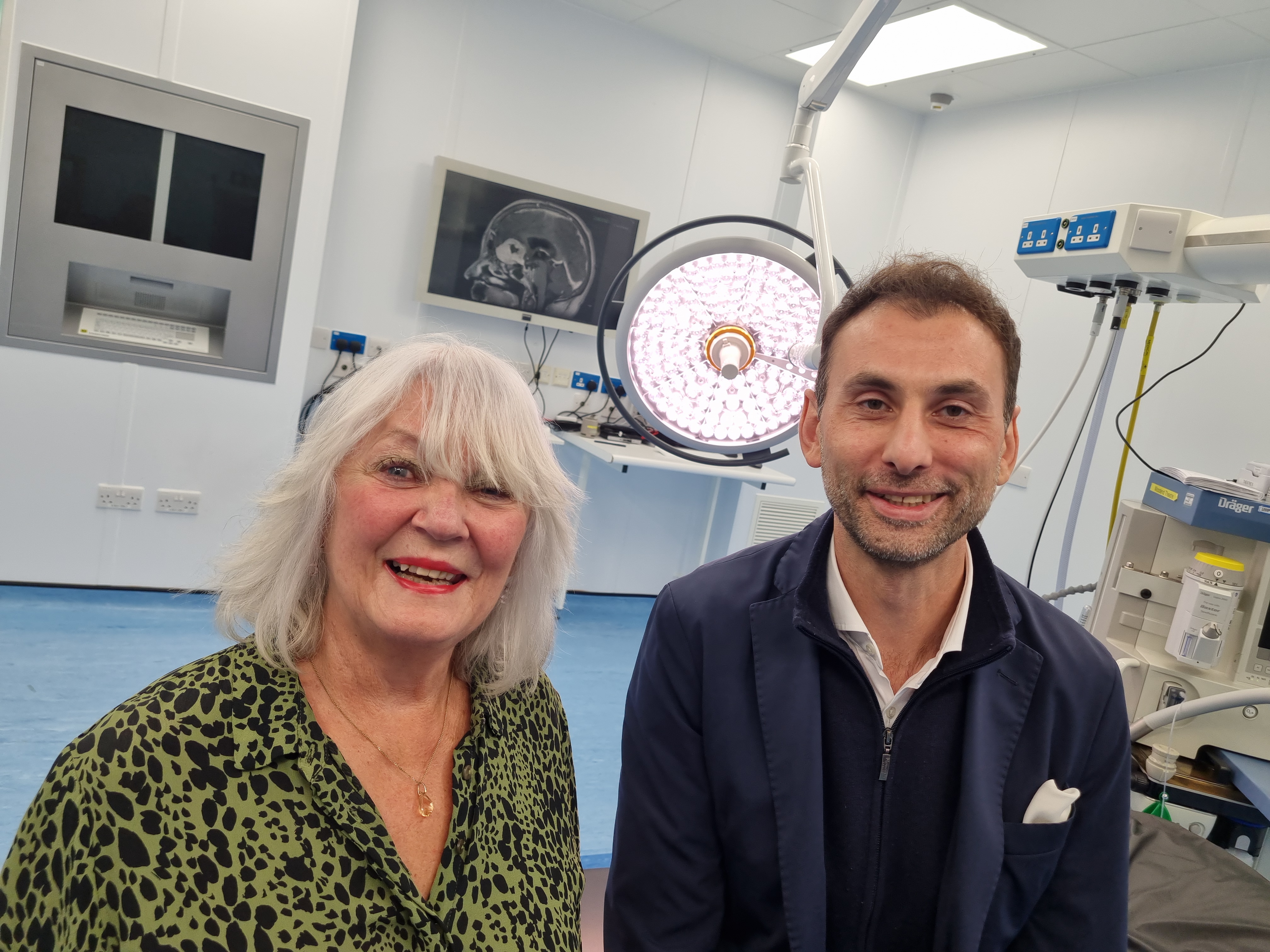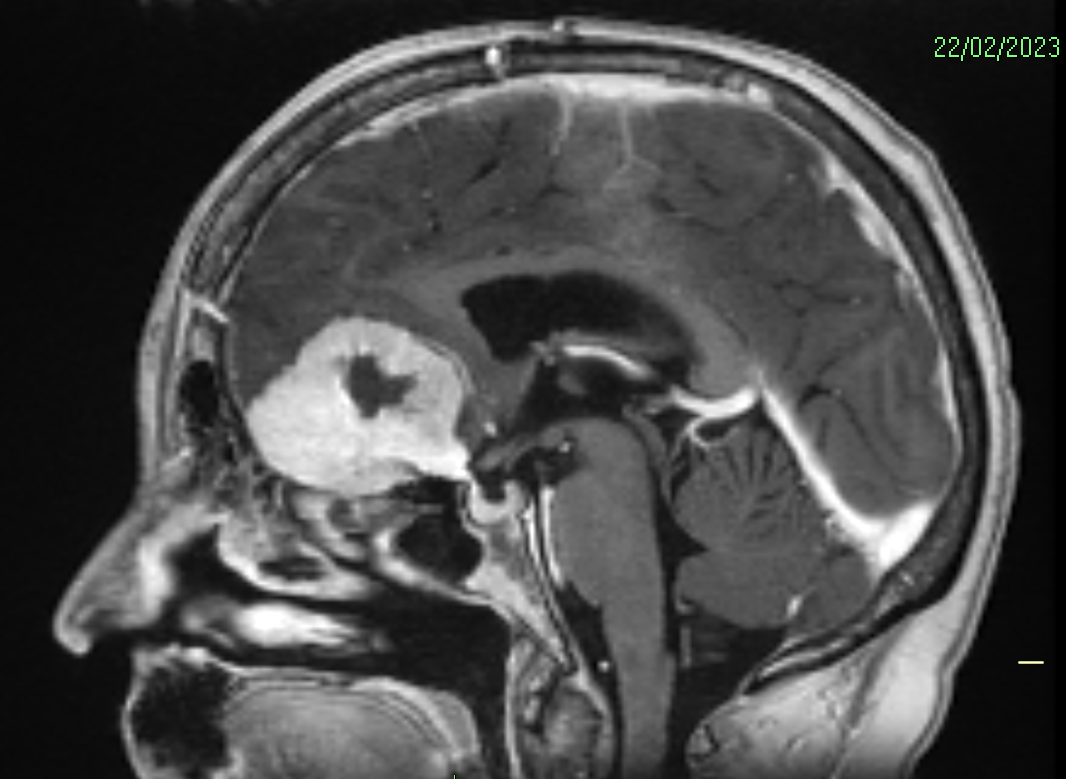Brain surgeon’s world-first sees tumour patients return to normal life in days
Published: 25/10/2024 09:14A pioneering NHS Grampian surgeon is removing brain tumours the size of large apples through patient’s eyebrows, in a world-first.
Consultant neurosurgeon, Anastasios Giamouriadis has adapted an already existing technique to remove the growths, leaving patients with only a small scar and black eye.
Many individuals have been able to leave hospital just 24 hours later and return to work within days.
Mr Giamouriadis said: “I didn’t invent this type of surgery, but I have modified it to give me more space, through the eyebrow and it is allowing me to remove very big brain tumours.
“We are not aware of anywhere else in the world that has managed to remove tumours as large as we have.”
Dealing with tumours at the front of the brain has traditionally led to surgeons having to remove a large portion of the skull – exposing healthy parts of the brain in the process – in what is known as a craniotomy.
Mr Giamouriadis said: “We are entering through the eyebrow. It gives us a very limited space but allows us to carry out the surgery more quickly and with less complications.
“It’s a game-changer and much less invasive. Traditionally people would be left with scars across their full forehead, we avoid that with this method.
“Before we needed do a craniotomy to give us full access. That takes a very long time. To get to the tumour takes up to three hours alone. In total that approach will take eight to ten hours.”
Mr Giamouriadis added that with his technique - which has been endorsed by British Neurological Society and European Association of Neurosurgical Societies - the operation can be over in three hours, with benefits for both the patient and surgeon.
“The very tricky part with these operations is at the very end. You are dealing with tiny vessels on the optic nerves, like hairs. You can see them only under very high magnification,” he said.
“When you are operating and you are nine hours in, surgeons can be understandably tired, so our way reduces the risk of error by reducing the operation length. With this method you are at the tumour in 30-40 minutes and, when you’re doing the last part of the operation, the surgeon is still fresh.”
Patients who have undergone the operation – known as the Modified Eyebrow Keyhole SupraOrbital Approach for Brain Tumours - have seen remarkable recoveries with many returning to normal life just days later.
“After the traditional method patients are kept asleep, we wake them up very slowly they require intensive care for a good few days. They then spend quite a few weeks on a ward and then usually need rehab,” he said.
“With this technique patients wake up straight way, they sometimes go home the day after the operation, where we know patients have quicker and better recoveries. That’s big for the patient, but also for the hospital in terms of maximising capacity.
“The patient goes home the next day, with a black eye. In a few months they have a barely visible scar.”
One patient, Doreen Adams underwent a craniotomy to remove a tumour abroad - before later undergoing the eyebrow method in the north-east.
The 75-year-old, from Aberdeen, said: “The recovery after the craniotomy was tough. I contracted sepsis and was ill for a number of weeks and the recovery took a lot of time.
“Unfortunately that surgery did not solve the problem and once back in Scotland I was referred to Mr Giamouriadis.
“For me, the difference in the two surgeries is night and day. My recovery from the surgery at ARI was much, much quicker. I was out of hospital two days later and back to my normal life almost immediately.
“To think you can have brain surgery and be back to normal within a few days is quite incredible.
“I’m very grateful to Mr Giamouriadis and NHS Grampian – it’s fantastic that we have this innovative approach and these skills here in the north-east.”


